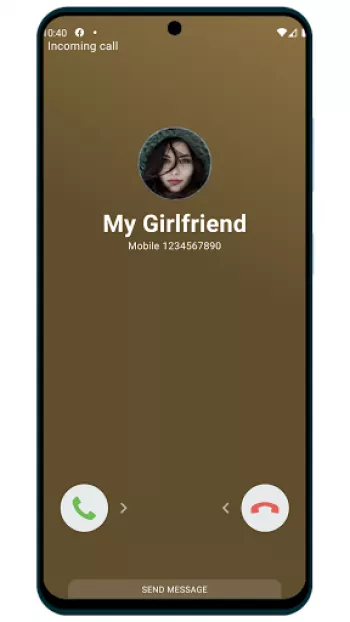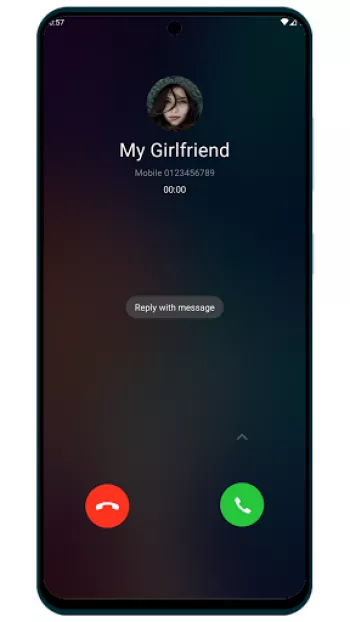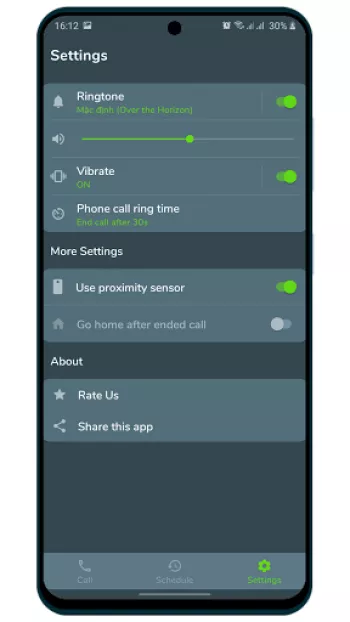Apps Home

The Intricacies of Prank Calls: More Than Just a Joke
Prank calls have been an enduring form of humor and mischief for many years, bringing about laughter, surprise, and sometimes bewilderment. While at first glance they may appear simple—a mere phone call with a humorous or unexpected premise—there's a complexity to crafting a truly successful prank call. Unlike other forms of humor that rely on visuals or a shared understanding of context, prank calls operate exclusively through the medium of voice. This poses unique challenges and opportunities for those who engage in this playful art form. The art of a prank call lies in the execution: the timing, the tone, the context, and, importantly, the caller's ability to think on their feet. They need to manage the balance between appearing genuine enough to elicit a response and outrageous enough to keep the situation light and humorous. Technological advancements have introduced apps and services designed to simulate prank calls, enhancing the traditional methods by allowing for customization of caller IDs, background noise, or even prerecorded messages. These tools have democratized prank calling, giving even the novice an opportunity to partake in this form of entertainment. Such apps often come with options to simulate different scenarios—be it a call from a celebrity, a fake emergency, or a fictional character, allowing users to craft more nuanced and variety-rich calls. This variety lends itself well to both everyday fun and to high-stakes social situations where a harmless prank can provide comic relief. Importantly, prank calls are often about shared experiences. A successful prank call requires a deep understanding of the recipient’s personality and sense of humor, ensuring the joke lands rather than offends. More than just causing confusion or laughter, prank calls build bonds between friends, creating stories to reminisce about together.
Understanding User Needs and App Functionalities
In today's fast-paced world, where humor and creativity often go hand in hand, the need for sophisticated prank call functionalities has never been greater. Prank call applications, particularly on mobile platforms, are designed to meet a diverse range of user needs, from simple manual setup to intricate scheduled pranks that accommodate precision and planning. At the core of these applications is the scheduling feature, a tool enabling users to time their calls accurately, ensuring they can simulate calls at the most opportune moments—perhaps during a tedious meeting or an awkward social encounter. To facilitate a more realistic setup, users can customize their incoming call screens, mimicking different network operators and utilizing different SIM card modes to make the call appear genuine. Night mode and different background colors also provide a visual cue that matches the real environment of the user. The introduction of character profiles elevates the prank call experience. Users can construct a call from a predefined set of characters, like a disgruntled boss or a concerned family member, or they can input their own, crafting an intricate and specific caller ID to heighten the realism of the prank. This level of customization ensures that users have the creative freedom to tailor experiences to any scenario imaginable. Moreover, the ability to modify caller pictures, names, and numbers means the application adapts effortlessly to the user's imagination. Voice recording features offer another layer of complexity, allowing users to pre-record messages that automatically play when the call is answered—infusing the prank with a dynamic interaction that’s nearly indistinguishable from a real conversation. With these customizable features, prank call applications cater to both novices looking for a quick laugh and seasoned jokesters who desire more control over their humorous interactions.
Ethics, Limitations, and Responsible Usage
While prank calls can yield laughter and entertainment, it's crucial to remember the ethical responsibilities that accompany their usage. The line between humor and harassment is thin, and understanding the implications of one's actions is paramount. Prank calling, if conducted irresponsibly, can lead to unintended consequences, including emotional distress or legal repercussions. Therefore, users of prank call applications must exercise discernment, ensuring that their actions remain within the boundaries of good taste and legality. A prank call should always be a consensual act among friends, where all parties understand the joke, even if it might momentarily catch one off guard. The intention should never be to harass or cause harm, and application developers often implement features and guidelines to promote healthy usage patterns. Features like dynamic shortcuts and multiple language support enhance usability, but they also come with disclaimers about appropriate usage, urging users to respect privacy and society’s regulations around unsolicited communication. In countries where prank calling is scrutinized, applications often provide disclaimers reminding users of local laws and the need for mutual respect. The technology should be seen as a tool for enhancing social interactions, not a weapon for causing discomfort. An understanding of when a prank is appropriate—and when it isn’t—is vital. Responsible usage involves knowing the audience and tailoring interactions that align with their sense of humor. This encourages positive social experiences, safeguarding against the negative impacts pranks can potentially have. Thoughtful consideration, empathy, and legal awareness are the cornerstones of ensuring prank calls remain a light-hearted social link rather than an unfortunate social slip.
Technical Features of Prank Call Applications
From a technological standpoint, prank call applications are marvels of modern mobile computing, seamlessly integrating with a device’s operating system to provide a smooth, intuitive user experience. These apps leverage various technologies to simulate realistic calls, requiring them to be deeply embedded within a device's notification system and contact list functionalities. An essential feature is the call scheduler, which interfaces with the internal clock of the device, allowing users to program calls to occur at specific times. This capability enhances the realism of the prank, as the timing can be matched precisely to desired contexts such as meetings or events. Customization is another technical marvel within prank call applications. Users can alter the UI of the incoming call screen, choosing visuals that can trick even the savviest friend or family member into believing the call’s authenticity. In dual-SIM devices, the ability to select which SIM the call appears to come from adds another layer of realism, allowing setup of highly credible scenarios. These apps typically allow integration with the device’s contact list, providing easy access and selection of prank caller IDs, which enhances the seamlessness of the simulation. The voice recording feature is particularly advanced, allowing for recordings that are integrated in real time during a simulated call. This means the recipient hears pre-recorded messages as if they are part of a live conversation. Each technical aspect is finely tuned to provide as authentic an experience as possible, ensuring that the 'prank' aspect remains gentle, humorous, and plausible while maintaining technical performance and low resource footprint.
Downloading and Using Prank Call Applications
Accessing and utilizing prank call applications is straightforward, thanks to their wide availability on various platforms. For Android users, apps can be seamlessly downloaded from the Play Store, offering a plethora of options. Upon downloading and installing, users can quickly explore various features such as caller ID settings, scheduling, and recording options. It's essential to navigate these settings to tailor the prank call experience to one's requirements effectively. The app guides users through simple steps to create authentic-looking calls, from selecting or customizing the calling screen background to deciding on the audio message snippet for a prerecorded call. Unfortunately, for iPhone users, availability might be limited due to Apple's stringent App Store policies, and such apps might occasionally face restrictions. However, those available often boast excellent design compatibility with iOS’s interface, maintaining quality and ease of use. Meanwhile, Windows, Linux, and Mac users are typically directed to external software solutions or web-based applications that can mimic similar functionalities, albeit with slightly varying interfaces. Regardless of the platform, downloading these applications is straightforward; with a simple search and a few clicks or taps, users can add the desired app to their suite of social tools. These applications not only serve as a playground for humor but also act as lifesavers, providing timely distractions during inconvenient situations. Through proper understanding and mindful usage, these apps can bring joy without crossing into problematic territory, reaffirming the importance of digital prudence and creativity. Download for Android
Share Your Opinion
Your Email Will Not Be Published.
All Rights Reserved © Apps Home 2025
















































Rachael
This app, unlike MOST others advertising a similar service, does the bare minimum (functioning properly without being too spammy) and then some! I ...
SK
Finally! Found the absolute best calling app, with Samsung Note 10+, and more updated UI. Have all the important features such as photos, voice, sh...
Cattitude2
The best fake, prank, hoax, get outta any awkward situation app that I've tried so far! The ads aren't intrusive, no pop up ads when u hang up a ca...
Sleepy Mita
Very realistic and natural. The problem about ADS can be fixed by turning on airplane mode (or just go offline) and there u go. It is easy to use, ...
Andiswa Palesa
I recommend this app if you want make your prank calls realistic, it's just perfect compared to the ones I used before. You can actually add record...